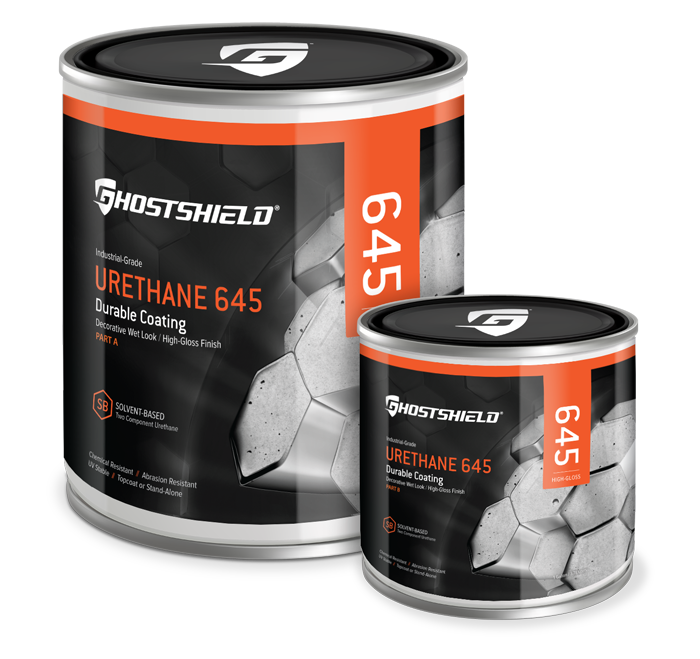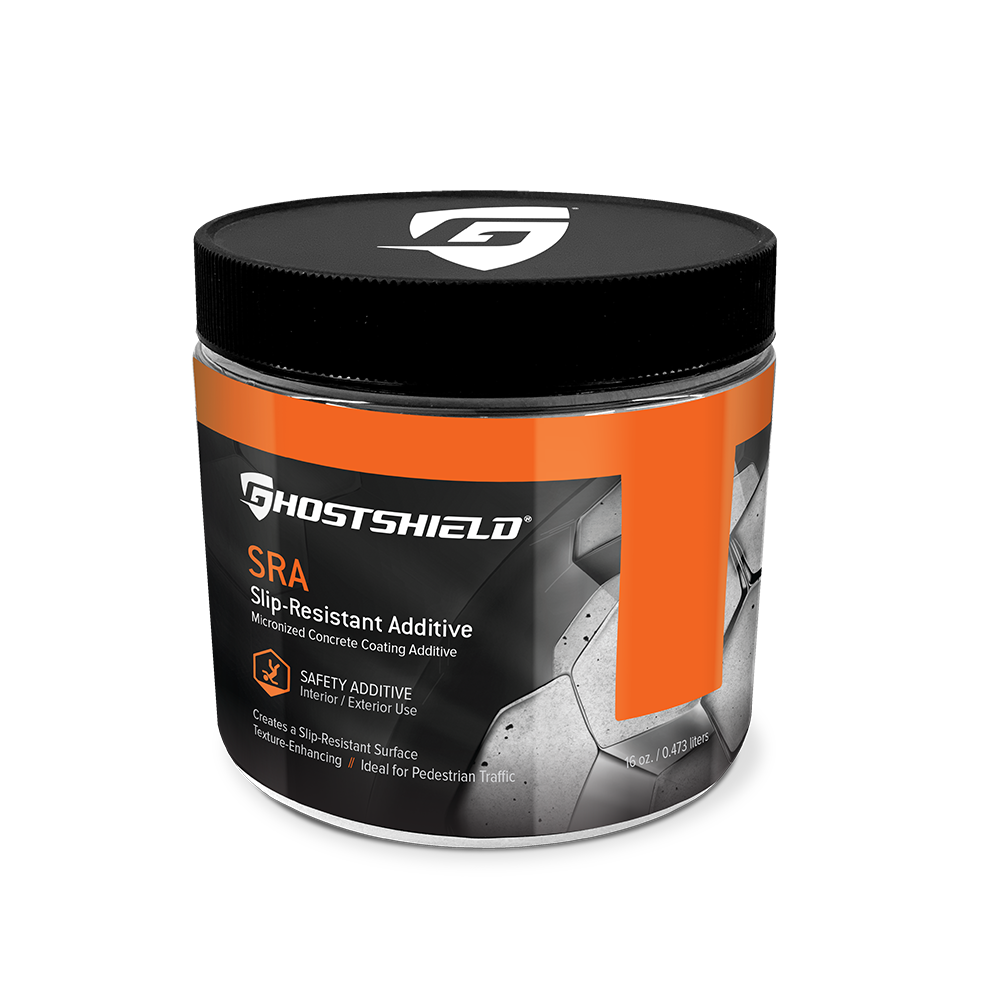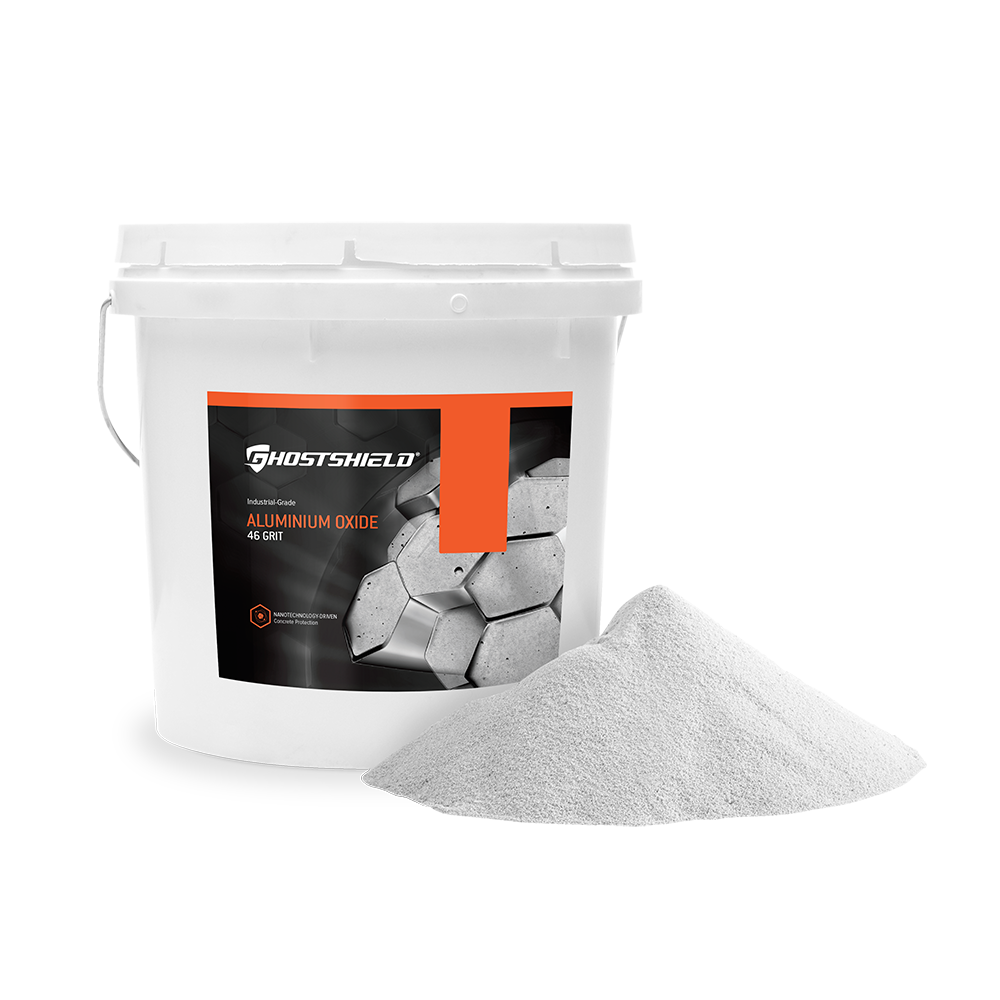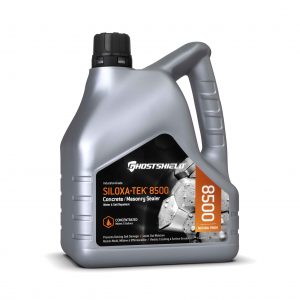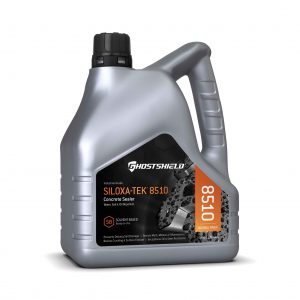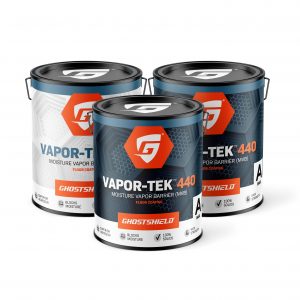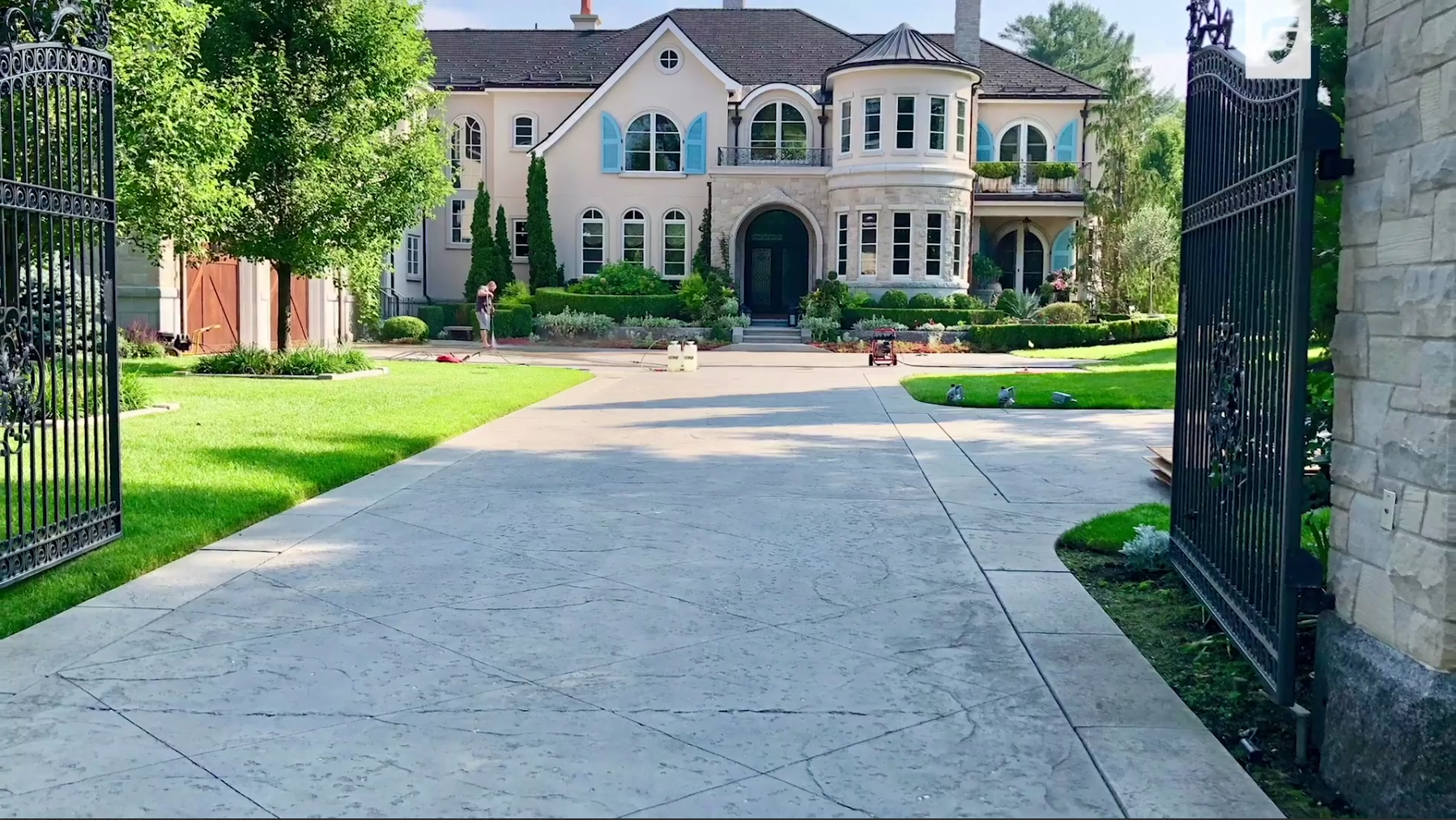Mixing:
This product comes pre-packaged by weight. Kits should be mixed in their entirety. This product has a two to one mix ratio by volume- merely mix two gallons of part A with 1 gallon part B. Urethane 645 A and Urethane 645 B should be thoroughly mixed before combining. Scrape the bottom and sides of each container. Urethane 645 A and Urethane 645 B can then be combined (Urethane 645 is sold as a pre-packaged kit and Urethane 645 Part A should be mixed in its entirety with Urethane 645 Part B). After the two parts are combined, mix well with slow speed mixing equipment such as a jiffy mixer until the material is thoroughly mixed and streak free. Avoid whipping air into the coating. Improper mixing may result in product failure.
Application:
Test the sealer in an inconspicuous area to ensure the desired coverage and appearance is achieved. The mixed material can be applied by brush or roller. Workable time is about 3 hours. Maintain temperatures within the recommended ranges during the application and curing process. Properly prime the substrate with the Epoxy 325. It is best to maintain a wet edge to avoid roller marks. Direct sunlight or high temperatures may cause visible roller marking during application. Too thick of an application may result in product failure. Exposure to certain types of lighting such as sodium vapor lights may cause the product to discolor. Applications with relative humidity higher than 90% and/or poor air circulation may cause improper cure and surface tackiness. When the end of the pot life has been reached, you will find that the material becomes hard to apply and will actually tend to roll back up onto the roller. Do not try to continue application when the coating has reached this step. Applications made at different times with differing environmental conditions, may show slight variations in gloss. Coverage is approximately 350 sq. ft. per gallon. Make sure you test the surface for dryness prior to use and allow at least 14 hours before walking. A full cure will take up to 5 days to complete.
Recoating/Topcoating:
Multiple coats of this product are acceptable. If you opt to recoat this product, you must first be sure that all of the solvents have evaporated from the coating during the curing process. It is best to test the coating before recoating or topcoating. This can be done by pressing on the coating with your thumb to verify that no fingerprint impression is left. If no impression is created, then the recoat can be started. Always remember that colder temperatures will require more cure time for the product before recoating can commence. Before recoating or topcoating, check the coating to insure no contaminants exist. If a blush or contaminants are present on a previous coat, remove with a standard detergent cleaner. When recoating this product with subsequent coats of the urethane, it is advisable to apply the recoat before 24 hours passes. Also, it is advisable to degloss the previous coat to ensure a trouble free bond.


